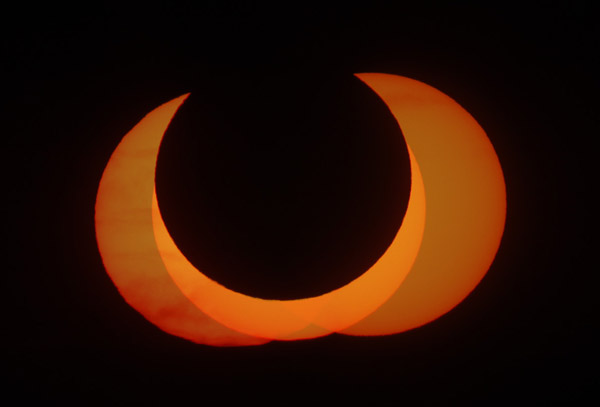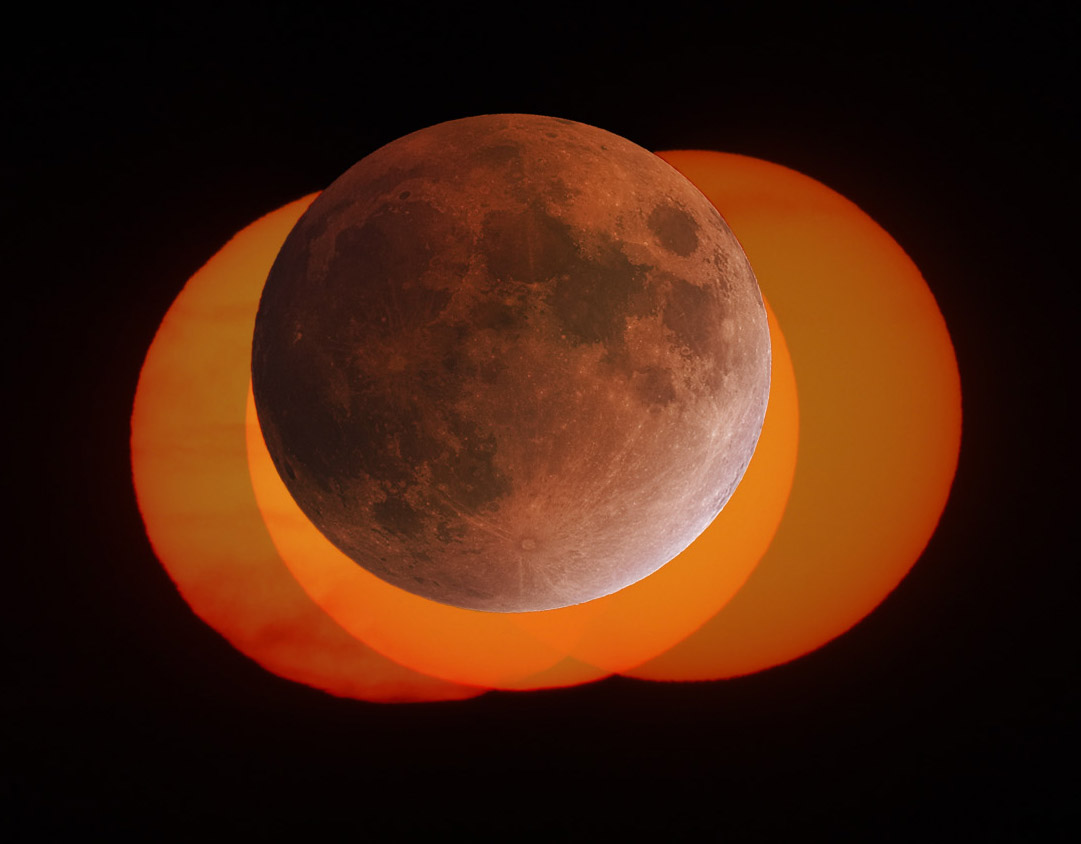January 11, 2011
Three Suns And Two Moons
solar images and composite by Peter Rosén, Stockholm, Sweden, and lunar eclipse image by Johannes Schedler
During the recent partial solar Peter Rosén

Technical Details
Solar images: The eclipse of the sun started before sunrise but the sun did not emerge from behind the clouds until 8h16 UT. The 3 composited pictures of the eclipse make up a portrait of the transiting moon. Not much is missing. The first picture was taken at 8h23' UT, the second shows the crescent at the maximum of 85% at 8h41', just a little bellow the theoretical maximum of 86% visible in the north of Sweden. The 3rd picture was taken at 9h07' UT just before the clouds started coming back and completely obstructed the view a little later. I used a William Optics FLT-110 at f/6,5 with a solar filter and also a Canon Eos-40D for the eclipsed sun. To get the correct orientation of the moon, I made a simulation using Starry Night Pro Plus version 6.4.1. In making this composite I had to flatten the Moon to compensate for the atmospheric refraction of the low altitude sun, only 3.3° versus 18° for the eclipsed Moon.
Lunar eclipse image: Feb 21, 2008. TEC-140 with TEC flattener at f/7. Canon 40D: 4 x 3 sec at ISO 200 for eclipsed Moon.
COMMENTS?
Click on this icon File:PostIcon.jpg at the upper right to post a comment.




